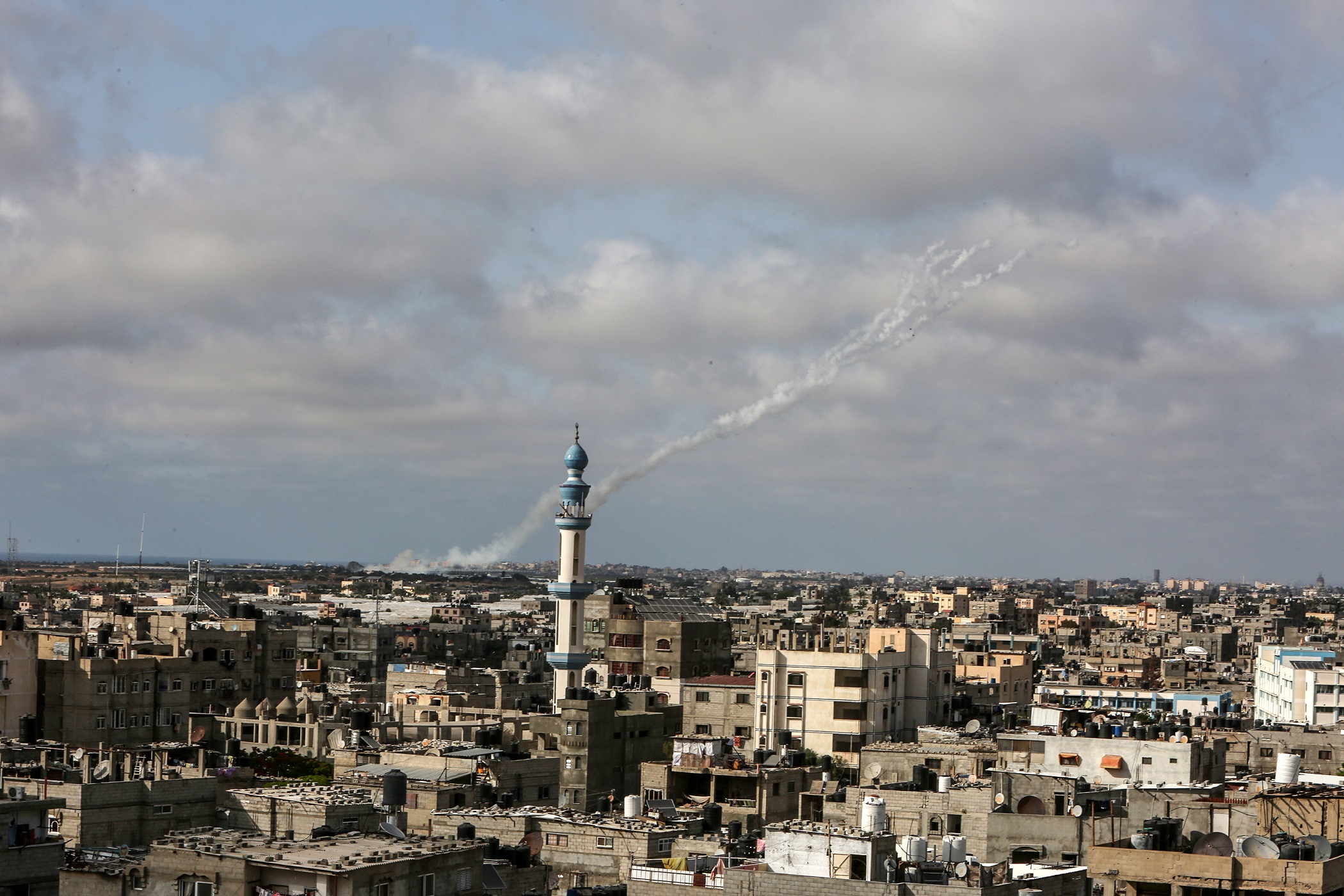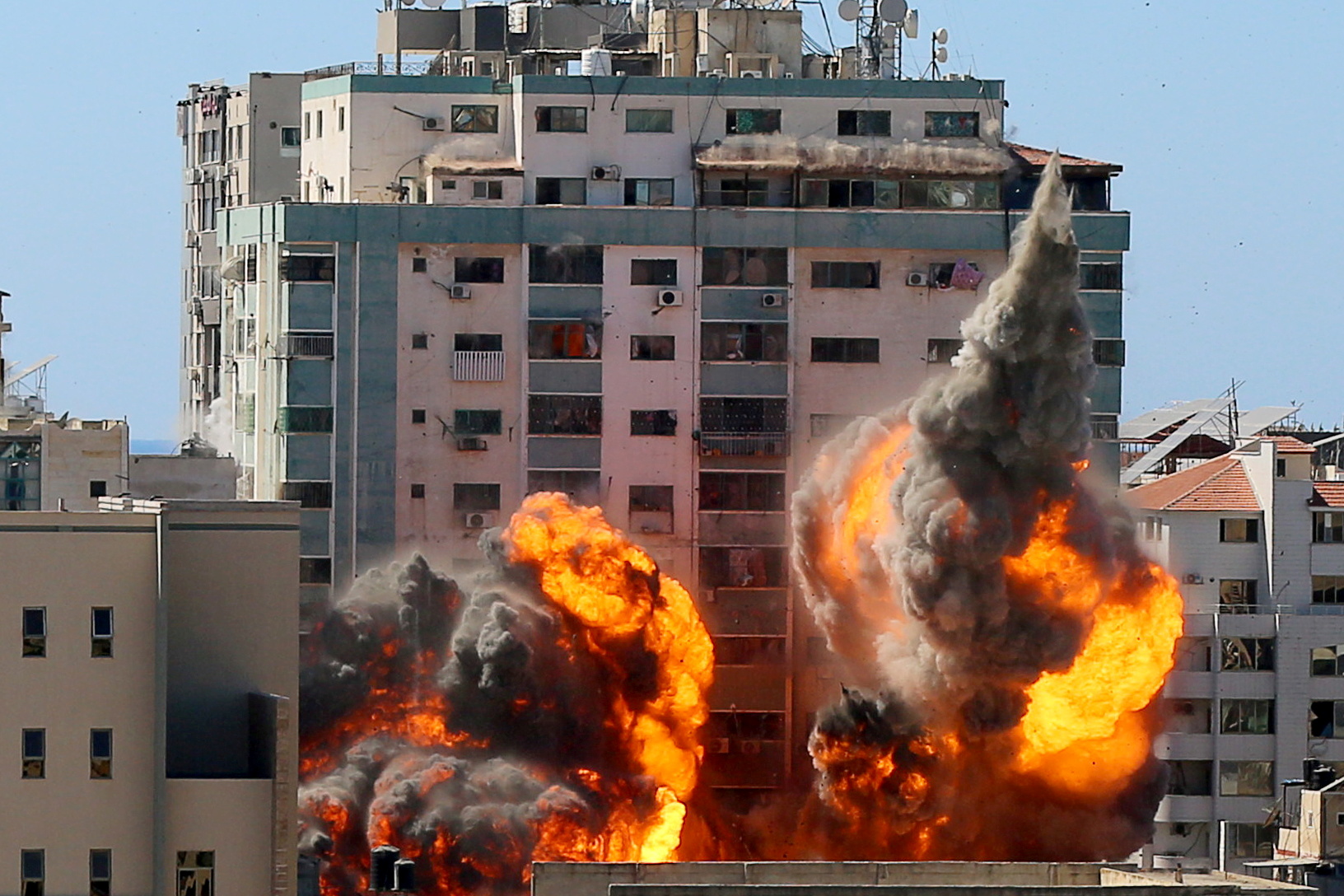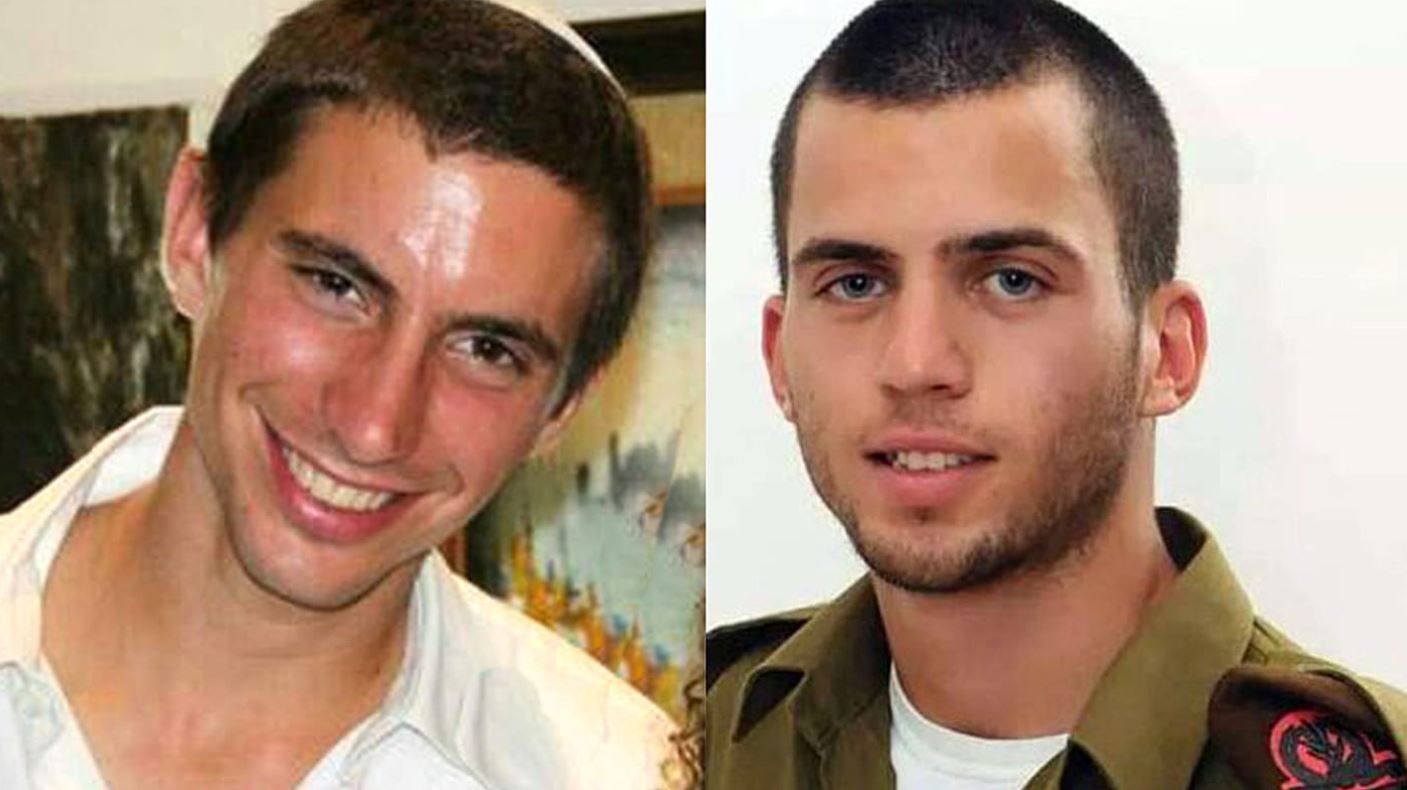Udi Dekel

Operation Guardian of the Walls was another round in the asymmetric conflict between Israel and Hamas. This asymmetry also applies to the operation's goals. While Hamas's objectives were political and cognitive, Israel's objectives were military. It was proven again that there was no magical solution that would have a lasting, substantive positive impact on the situation in the Gaza Strip. At the same time, the option of an arrangement with Egyptian mediation – a long-term ceasefire and the return of the Israeli prisoners and bodies of missing soldiers in exchange for significant easing of the closure of the Gaza Strip and advancement of infrastructure projects in the region – should be encouraged. Increasing the value for Israel of the arrangement option requires stabilization and inspection regimes, especially an Egyptian and international commitment to an effective inspection mechanism for preventing rearmament and renewed force buildup by Hamas and Islamic Jihad. In order to contain the strengthening of Hamas, the Palestinian Authority must be stabilized and strengthened in preparation for the post-Mahmoud Abbas era. By canceling the elections and cooperating with Israel in maintaining quiet on the West Bank, Abbas has lost the little legitimacy he enjoyed among the Palestinian public. Leverage that would help the Palestinian Authority depends on renewal of the political process, accompanied by Israel’s refraining from creeping annexation measures on the West Bank.
Operation Guardian of the Walls is another example of an asymmetric conflict between a country and a terrorist army operated by an Islamic nationalist movement. The asymmetry also applies to the operation's goals. While Hamas's objectives were political and cognitive, Israel's objectives were primarily military, and it was on the basis of these targets that Israel assessed the balance once the fighting was over.
Hamas achieved its objectives with the very opening of the campaign. The organization positioned itself in the Palestinian arena as the defender of al-Aqsa and Jerusalem; launched rocket barrages deep into Israel's territory, disrupting routine civilian life and causing 12 fatalities and much destruction; incited disturbances between Arabs and Israelis in mixed communities; sparked violent demonstrations in the West Bank and on the Israeli-Lebanese border; and proved that it was the only actor (in contrast even to Hezbollah and Iran) willing to face the strongest military in the region. Above all, Hamas demonstrated that it was the leading movement in the Palestinian camp, while highlighting the weakness of the Palestinian Authority (PA).
Israel's goal was primarily military – attaining prolonged security calm and postponing the next round of conflict. It was reluctant to define a strategic objective of fundamentally changing the situation, or at least establishing new rules of the game with Hamas in an effort to reduce the linkage between the arenas: the Gaza Strip, Jerusalem, and Arab public opinion in Israel. Israel’s assessment of the results of the confrontation focuses on the massive military activity designed to make Hamas "think before shooting at us the next time" – deterrence by emphasizing the heavy price of its aggression and weakening its military force and damaging its ability to rebuild it; attacking its commanders; and neutralizing the organization's underground backbone and minimizing damage and surprises to the Israeli home front. Israel's overall strategy toward Hamas, however, did not change during the confrontation. Israel continued both to designate Hamas the responsible party in the Gaza Strip, without threatening its continued rule there, and to differentiate between the Gaza Strip and the West Bank.

Israel ostensibly succeeded in separating the ceasefire from a commitment to elements of the arrangement, or at least between the ceasefire and understandings that would prolong the calm. In terms of an asymmetric conflict, this constitutes an Israeli victory of sorts – forcing a ceasefire on terms dictated by Israel and denying Hamas any strategic achievement, such as "defender of al-Aqsa" and "leader of the Palestinian camp – an alternative to rule by Fatah." Hamas demanded a change in Israel's conduct at al-Aqsa and a decision against evictions in Sheikh Jarrah, in contrast to previous rounds of conflict, in which Hamas concentrated on an arrangement that would include removal or at least easing of the closure of the Gaza Strip and reconstruction of its territory without any effective mechanism for preventing rearmament. Hamas’s announcement on the ceasefire stated, "The aggression will stop, and any action by the 'occupation' in Jerusalem, at the al-Aqsa Mosque, or in Sheikh Jarrah will result in renewal of the conflict." Time will tell whether Israel agreed to this, or whether the Egyptian mediator told each side what it wanted to hear.
Over the years, Israel has in effect accepted Hamas's rule in the Gaza Strip out of the need for a responsible party in the area. At the same time, Israel took the position that the PA was not a partner for a settlement because it was unable to function as a responsible, stable, and effective actor capable of resuming control of the Gaza Strip. Now, however, Israel must reconsider its policy toward the Gaza Strip and Hamas. Hamas’s ostensible rationale, on whose basis an arrangement with it was formulated in the past – improvement of the civilian and infrastructure situation, with the continuation of quiet and security stability – was proven mistaken. It seems that Hamas is even willing to sacrifice the Gaza Strip in order to promote its ideological and political goals.
Israel should resolve the tensions in its conduct on Hamas and the Gaza Strip:
Israel has an interest in preventing a Hamas takeover in the Palestinian arena, while at the same time strengthening the PA's status and maintaining it as a partner for negotiations with Israel. This interest contravenes succumbing to Hamas's blackmail, which has enabled the organization to consolidate its rule and allowed it to build its military force in the Gaza Strip, while encouraging its leadership to think that it can take control of the Palestinian camp.
Israel's policy conveys that withholding official recognition of Hamas does not rule out de facto recognition of the organization as the ruler in the Gaza Strip and the responsible address for what takes place there. Ending Hamas's control of the Gaza Strip has not been cast as a current strategic goal.
There is an essential need to relieve the economic and humanitarian distress in the Gaza Strip; on the other hand, it is necessary to prevent a military buildup by Hamas. The organization took advantage of the entry of construction materials, like cement designated for reconstruction of the buildings destroyed in the previous rounds of conflict, in order to construct an underground Gaza Strip – a system of tunnels in the Gaza Strip and tunnels penetrating into Israeli territory. Rigorous means of inspection are needed to monitor the entry and use of dual-use materials in the Gaza Strip to prevent their reaching Hamas’s military projects.
It is necessary to include the PA in the reconstruction of the Gaza Strip, and to create conditions for restoring its rule in the area. This goal runs counter to Israeli policy, which focuses on isolating the Gaza Strip from the West Bank, opposing a unified Palestinian government, and weakening the PA's status as a partner for a political settlement. The PA is also reluctant to take responsibility and control in the Gaza Strip (assuming that conditions for this exist) as long as Hamas maintains a military wing and holds a monopoly on the use of force in the Gaza Strip.
There must be international awareness of the difficult situation in the Gaza Strip and the need for international aid. At the same time, there is a growing sense in the international community that the lack of a political horizon renders investment in the Gaza Strip useless, because the area is controlled by a terrorist group and any investment runs a constant risk of security escalation that will destroy it.
Now is the time for Israel to base the calm following the ceasefire on an arrangement or understandings establishing rules of the game with Hamas: ensuring calm and security stability; weakening the status of Hamas in the Palestinian arena and preventing it from taking over the PA; preventing a renewed military buildup by Hamas and Islamic Jihad; improving and stabilizing the humanitarian situation in the Gaza Strip under the management of an international inspection regime as a goal in itself, and as a means of preventing negative consequences for Israel; reducing Israel's responsibility for Gaza and countering the image of the Strip as still being under "Israeli occupation"; securing an Egyptian commitment to security quiet in the Gaza Strip, a halt in weapons smuggling through Egypt, and restraint of Hamas and the other terrorist groups; continuing the normalization process with the pragmatic Arab states and attempting to include them in reconstruction projects in the Gaza Strip and encouraging their provision of aid to the PA.
The four possible levels of an arrangement are interrelated, but should be kept separate, with a different party responsible for each of them:
Political: vis-à-vis the PA, not Hamas; promoting the PA's status in the Palestinian camp, rewarding it for the choice of dialogue over "resistance" and the use of force.
Security: Egyptian guarantees for preserving the ceasefire. If the quiet does not continue, Israel will have to put a mechanism for compulsion into effect – powerful attacks against Hamas for every violation from the Gaza Strip (Hamas will be required to restrain the recalcitrant factions).
Economic reconstruction: the formation of an international agency (Quartet/UN/ pragmatic Arab states) to manage the reconstruction project in the Gaza Strip and the humanitarian aid for the population. Israel should make this contingent on an effective mechanism for preventing the rearmament of Hamas and Islamic Jihad. Extortion by Hamas, made possible by the entry of money from Qatar, which was also used for Hamas's military buildup, should also be prevented.
An exchange with Hamas of prisoners/soldiers missing in action: the return of the civilian prisoners and the bodies of Israeli soldiers held by Hamas involving a reasonable number of prisoners and taking into account the gravity of the crimes committed by the terrorists to be freed in the exchange. Israel should make this a condition for the formation of an international aid regime for the Gaza Strip.

A year ago, the Institute for National Security Studies (INSS) conducted a study on alternatives for the Gaza Strip. The analysis examined five political and security alternatives for dealing with the security challenge that the Gaza Strip in general, and Hamas in particular, poses to Israel. The alternatives are:
Conflict management, based on the logic of adjustment and deterrence. This alternative means applying constant pressure on Hamas in order to weaken it, achieve prolonged calm, and postpone the next round of conflict through stronger deterrence.
A ceasefire and prolonged calm (tahdiya, in Arabic) between Israel and Hamas, based on an arrangement. This involves improving the economic and civilian situation in the Gaza Strip by advancing economic and infrastructure projects in exchange for calm and the preservation of quiet. This alternative means recognition of Hamas as the sole responsible address for the Gaza Strip. In this alternative aid will be transferred in measured and supervised mechanism under the management and inspection of a representative of the UN/Quartet. In this framework, the Qatari aid channel will be closed, and a channel will be built that will restrain Hamas comprising the pragmatic Arab states, under the leadership of the United Arab Emirates. Aid for rebuilding infrastructure – water, sewage, and the supply of energy and electricity – will be provided on condition of security calm, including a halt in incendiary balloons and violent events along the security barrier. It is therefore clear that this format can only delay a future conflict, because it leaves Hamas with a monopoly of power in the Gaza Strip, lacks stabilizing elements, and does not address the fundamental problems there.
Total separation of the Gaza Strip from Israel and the West Bank, based on the logic of separation and the realization that in the long term, there is no way to prevent Hamas’s rearmament and control over the Gaza Strip. This alternative also requires a process of reconstruction in the Gaza Strip, led by the international community, and with the support of Arab countries. It means opening the Gaza Strip to the world and reducing its dependence on Israel for the supply of electricity, water, goods, materials, and equipment, until this dependence is totally eliminated. This framework requires construction of a seaport close to the Gazan coast, with security measures that meet Israel's security demands. The main problem with this alternative is that implementation will take a long time and involve a great deal of friction.
A military operation to destroy the military wing of Hamas, according to the logic of a decisive military victory. After Hamas's military force is dismantled, it will be necessary to implement measures to shape and stabilize the area. This alternative can also be a platform for the advancement of other alternatives – managing the conflict, maintaining deterrence, and preventing Hamas’s renewed force buildup through campaign between wars activity; bringing the PA back to the Gaza Strip with the aim of making it the responsible party there; forming an international or inter-Arab trusteeship in the Gaza Strip (the chances of the latter two options are poor).
Creating conditions for internal Palestinian reconciliation that will restore PA control in the Gaza Strip, according to the logic whereby any arrangement can be only with the PA, because it is the sole party that represents all parts of the Palestinian camp. The main problem is that Israel lacks the means to promote this alternative. Severe enmity and unbridgeable gaps exist between the PA, led by Fatah, and Hamas. At the same time, recent events are more likely to push Fatah into a unity government with Hamas in an attempt to maintain the PA as a relevant entity.
The analysis process showed that there was no magical solution that has a lasting, substantive positive impact on the situation in the Gaza Strip. Nevertheless, it was concluded that the best alternative, which has the most auspicious chances of materializing, is an arrangement between Israel and Hamas via Egyptian mediation that will consolidate a long-term ceasefire and facilitate a substantial easing of the closure on the Gaza Strip and the advancement of infrastructure projects there. On the other hand, Operation Guardian of the Walls made it clear that Hamas is willing to sacrifice new infrastructure in order to advance its ideological and political goals in the Palestinian arena.
Increasing the value for Israel of the arrangement option requires external stabilization and inspection mechanisms, especially an Egyptian and international commitment to an effective regime for preventing rearmament and renewed force buildup by Hamas and Islamic Jihad. The results of Operation Guardian of the Walls make it possible to reach understandings for a ceasefire from an advantageous position, based on reinforced deterrence. They do not, however, constitute a platform for fundamental change in the Gaza Strip. A ceasefire and arrangement with Hamas will preserve its current status as the sole functioning responsible party in the Gaza Strip. Coordination between Israel and Egypt is essential in any situation. President el-Sisi in Egypt, who takes a pragmatic policy toward the Gaza Strip, is expected to continue his support for an arrangement that extends the calm, as long as it regards this as a temporary solution that does not rule out the return of the PA to the Gaza Strip and a future political solution between Israel and the PA.
In order to prevent Hamas from becoming stronger and taking over the Palestinian system, it is essential to stabilize and strengthen the PA in preparation for the period when President Mahmoud Abbas is no longer in office. The PA must be able to present impressive accomplishments toward its constituents in the West Bank in order to strengthen its status, among them a clear improvement in the economic situation and daily life in the West Bank, coupled with improved stability and better performance by PA, in the hope that this will enhance its legitimacy. One very significant development that the PA could leverage to fortify its standing would be renewal of the political process, accompanied by Israel’s refraining from creeping annexation measures on the West Bank. This step depends solely on Israel.
None of the alternatives considered, except for the IDF taking control of the Gaza Strip and dismantling Hamas's military wing, provides an effective solution to the organization's rearmament. Nor do they provide a solution for the possibility that Hamas will be able to launch rocket salvoes against Israel whenever it chooses. Even if Israel chooses the arrangement option, it should therefore build a relevant and concrete alternative of a military confrontation with a decisive outcome that includes an immediate land operation deep in the Gaza Strip in order to defeat Hamas's military force and that of Islamic Jihad, and to dismantle Hamas's military wing. Such an operation will take weeks to accomplish, involve many IDF casualties, and cause widespread death and destruction in the Gaza Strip. The public in Israel should be made aware of the costs of such a campaign. Readiness for a decisive military campaign will strengthen deterrence and make violating the ceasefire, or allowing other factions to do so, less attractive to Hamas.
No comments:
Post a Comment